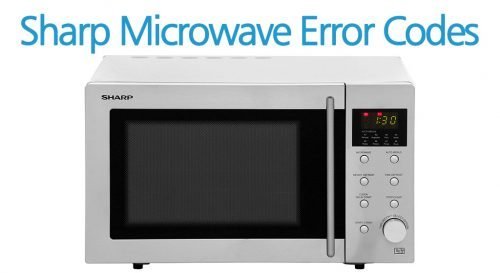
Imagine you’re in the middle of heating up your dinner, and instead of the usual comforting hum of your microwave, you’re greeted with an unfamiliar error. The E2 code is Sharp’s way of letting you know that something’s not quite right with your appliance. But no worries, decoding this message doesn’t require a degree in rocket science. By the end of this article, you’ll know exactly what E2 means and what steps you can take to fix it. So, let’s dive in and get your microwave back on track.
Understanding Error Code E2 on Sharp Microwaves
The E2 error code in Sharp microwaves is essentially a warning signal indicating an issue with the microwave’s temperature sensor. Think of this sensor as a kind of thermostat inside your microwave. Just like how your home thermostat controls the room temperature, this sensor helps maintain the right level of heat inside the microwave. If it’s not functioning properly, it sends out the E2 code to alert you.
When this error pops up, it’s typically because the sensor has detected an unexpected temperature condition. Maybe the microwave is getting too hot or not heating at all. Either way, the sensor isn’t happy and needs attention. This isn’t something to ignore, as continuing to use a malfunctioning microwave could lead to further issues, potentially pushing it beyond a simple DIY fix.
It’s important to note that error codes are like a microwave’s way of speaking to you. They communicate what’s wrong so you can take appropriate action. Sometimes, it could be as simple as resetting the appliance, but other times, it might need a bit more digging.
Common Causes of Error Code E2
So, you might be wondering, what exactly causes this E2 code to appear? There are a few possible reasons. One common issue is a faulty or misaligned temperature sensor. Over time, sensors can wear out, or they might become loose from frequent use or an unexpected jolt. If the sensor isn’t correctly reading the temperature, it triggers the E2 code.
Another frequent culprit can be an issue with the microwave’s ventilation. Microwaves need proper airflow to function correctly, similar to how you need to breathe. Blocked vents or excessive dirt and dust can cause the internal temperature to rise, setting off the E2 alarm.
Lastly, power surges or fluctuations could also lead to this error code. You know those little power hiccups during a storm? They can sometimes change the internal configurations, causing sensors to misread conditions. If a quick power cut happens, the sensor might think something’s wrong and flash that pesky E2 code.
How to Fix Error Code E2
Here’s the deal—you can often remedy the E2 error with some straightforward steps. First, try resetting the microwave. Unplug it from the power source, wait a couple of minutes, and then plug it back in. Think of this like rebooting your computer when it’s acting up; it gives the appliance a fresh start.
If that doesn’t do the trick, check the ventilation. Ensure the vents aren’t blocked by any objects or accumulated dust. Proper airflow could solve the problem by lowering the microwave’s temperature.
Still seeing E2? It might be time to consider the possibility of a sensor issue. This would typically require a more hands-on approach and might be best left to professionals, especially if you’re not comfortable with appliance repairs. A technician can properly assess the sensor and determine if it needs adjustment or replacement.
Preventing Future Error Codes
Preventing issues is always easier than fixing them. To avoid encountering the E2 error in the future, consider regular maintenance. Keep your microwave clean and free from blockages, allowing for good ventilation. It’s like giving your microwave room to breathe, ensuring it never overheats.
Also, try using a surge protector to safeguard your microwave against power fluctuations. It’s a small investment that could save you from future headaches.
Lastly, if you notice any unusual sounds or operations, don’t ignore them. Addressing minor hiccups before they turn into big problems can extend the life of your appliance.
By understanding error codes and taking proactive steps, you’ll keep your microwave running smoothly. So next time you see E2, you’ll know exactly what to do. Happy microwaving!